It is not just what we eat that is essential, but what our body is able to digest. We can eat good food, but without proper preparatory steps, unknowingly, we can invite an array of digestive issues.
When it comes to natural Energy food sources, there’s nothing more potent, more nutritionally dense than nuts, seeds, legumes, and grains. They’re packed with vitamins and minerals, regardless of preparation methods. Nevertheless, substantial nutrients become more accessible just when the sprout is about to emerge out of the seed.

how's & WHY'S OF SOAKING
Awake the Power Within
I always looked at nuts, seeds, legumes, and grains, as mini-miracles of boundless creation. After all, they contain everything needed to become a vibrant life. They’re tiny sleeping beauties waiting to be awakened from the dormant state.
By immersing them in water, you can witness an unfolding miracle of life. Awakened by the water, they drink it with thirst while expanding their boundaries, and mini chemical factories within explode with nutrient production. That marks the beginning of the sprouting process.
Reorganization of the chemical structure from within manifests in changing of the nuts’ and seeds’ taste, while enriching them with ferments that are responsible for a sprout development. Simultaneously, remains of Phytic acids and other digestive inhibitors (like Tannins) vacate a seed.
What’s phytic acid?
All seeds, grains, and nuts contain phytic acids. Nature covers them with Phytates to ensure the survival of the species. Phytic acid plays an essential role in protecting the seed from premature consumption by wildlife. The amount of phytic acids in the nucleus decreases as seeds mature.
Concerning the effects on the human body, Phytic acid is a food inhibitor that chelates micronutrients and prevents them from being bioavailable.
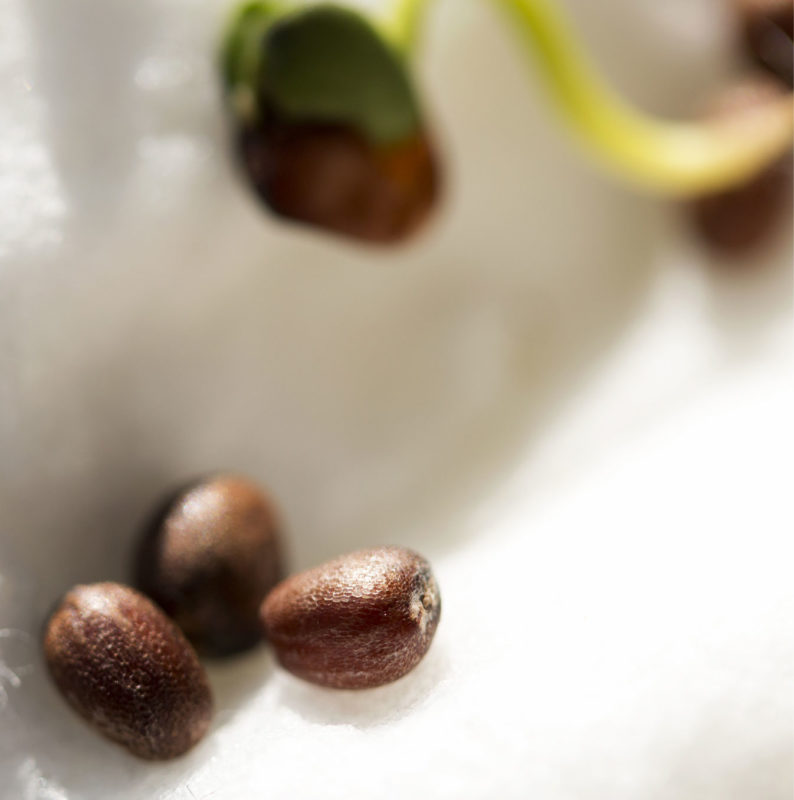
In other words, enzyme inhibitors bind to specific vitamins and minerals within our body, impairing their digestion. Anti-nutrients bind with iron, magnesium, zinc, and copper in our colon, preventing their absorption. By soaking, we activate seeds and nuts and breaking the digestive inhibitors, making it easier for our body to digest and extract the necessary nutrients for proper function.
(if you want to get technical, see the science behind it here )
Cultivating Energy
Soaking nuts, seeds, beans, and grains is an essential preparatory step. Digestion is an energy-intensive process. Soaking ignites germination, maximizes phytonutrients, and bioavailability, therefore, improves digestibility in the human system. So our cells have access to more ingredients critical to producing the energy we want.
Most of the nuts, seeds, and legumes can be eaten raw after soaking or sprouting, while some (almonds, black lentils) need to be blanched (deskinned) as they are hard to digest. But even if we are cooking them, soaking or sprouting will dramatically increase the amount and accessibility of nutrients.
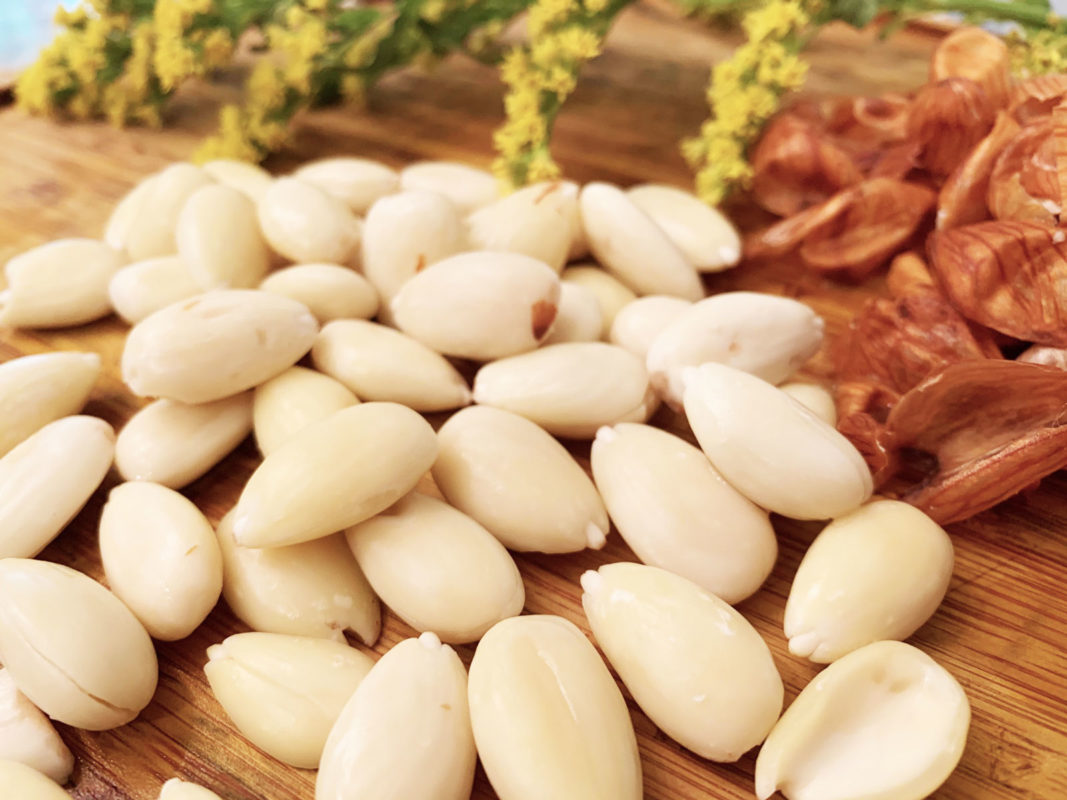
Why Soak with Salt and Lemon Juice?
The practice of soaking beans, nuts, seeds, legumes, and grains in water with a pinch of salt and a splash of lemon juice is rooted in both traditional cooking methods and modern nutritional science. This process, often referred to as pre-soaking or pre-fermenting, aims to improve the digestibility and nutritional availability of these foods. Let’s explore the reasons behind the use of salt and lemon in this context, considering the depth of understanding you appreciate.
The Role of Salt
- Enhances Water Penetration: Salt can help soften the hard outer layers of grains and legumes more efficiently, allowing water to penetrate more effectively. This softening process reduces cooking time and can improve texture.
- Mineral Availability: A pinch of salt can slightly alter the pH of the soaking water, which may aid in the breakdown of phytic acid, a natural substance found in plant seeds. Phytic acid binds to minerals such as calcium, iron, and zinc, making them less available to our bodies. Reducing phytic acid can therefore increase the bioavailability of these minerals.
The Role of Lemon Juice
- Acidic Environment: Lemon juice, being acidic, further assists in breaking down phytic acid. The acidity can help to initiate the breakdown of enzyme inhibitors present in these foods, which can otherwise interfere with our digestive enzymes and make digestion more difficult.
- Enhances Nutrient Absorption: The acidic medium can also promote the conversion of some nutrients into more bioavailable forms. For example, it can increase the availability of certain antioxidants and vitamins.
- Promotes Beneficial Fermentation: Although not fermentation in the traditional sense, the slight acidity from lemon juice can encourage the growth of beneficial microorganisms present on the surface of these foods. These microorganisms can pre-digest some of the complex sugars, reducing gas and bloating often associated with consuming these foods.
Synergistic Effects
The combination of salt and lemon juice creates an environment that is not just about softening these foods but also enhancing their nutritional profile and digestibility. The salt facilitates water absorption and mineral availability, while the lemon juice contributes to the breakdown of phytic acid and enzyme inhibitors. Together, they create a more favorable condition for our digestive system and improve the overall nutritional benefits of consuming beans, nuts, seeds, legumes, and grains.
This practice is a beautiful example of how traditional wisdom and modern nutritional science can converge, enhancing our understanding of how to prepare food in a way that respects both the body’s needs and the integrity of the ingredients.
The Benefits of Soaking:
- Promotes the production of essential enzymes for digestion;
- Increases nutrients available to cells to create vital energy;
- Dramatically decreases gas-causing components;
- Makes protein in a form that is better assimilated by the human body;
- Enriches flavor and taste;
- Decreases cooking time;
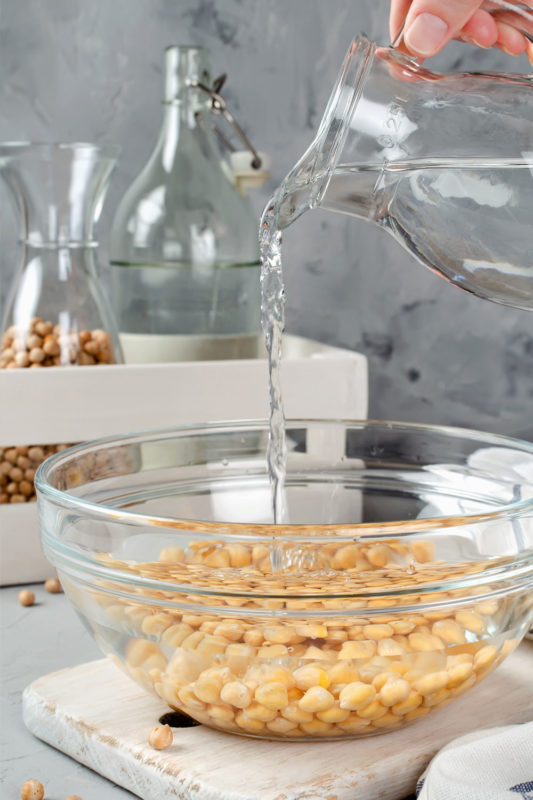
How to Soak
- Using a mesh strainer, rinse thoroughly under running water.
- Place nuts, seeds, grains, or legumes into a glass or ceramic bowl;
- Add lukewarm water. The water level should be slightly more than double the height of the ingredients in the bowl.
- Add a pinch of salt and a splash of freshly squeezed lemon juice. (it will help to reduce the amount of enzyme inhibitors even further);
- Place a cotton or linen towel over the bowl;
- Soak for 6 to 12 hours, depending on the kind (see below);
- Drain off soaking liquid and rinse thoroughly with fresh water;
*nuts, seeds, grains, or legumes have to be raw;
* If you are soaking for more than 8 hours you have to drain and rinse every 8 hours; If impossible, soak them in the fridge.
Now, your seeds and nuts are ready for you. Here you have it, precious lives that are willing to become you. All you have to do is enjoy them consciously, with gratitude. I love to place the first one from the bunch in my mouth and hold it there for a little while… until it turns sweet. I love to feel the freshness and experience a bouquet of flavors as I slowly chew it. Then… I watch it dissolve into me.
You can enjoy your superpowered seeds and nuts (other than almonds) right away. Almonds have to be blanched (fancy word for soaking and removing the skin).
It is essential to soak almonds at least overnight. Almond skins have an acidic and astringent mild cyanide. Even though the amount of cyanide is minuscule, it is toxic to the liver. (1, 2). Soaking and blanching almonds remove cyanide along with other digestive inhibitors.
After soaking, almond’s skin easily slides off. You’ll be done in no time! I find the process of skinning almonds strangely satisfying and meditative.
Sometimes I have a batch of almonds that is hard to peel even after soaking them overnight with a pinch of salt and a splash of lemon. So, I use this trick to speed up the process.
If your almonds are too hard to peel after soaking:
- Transfer soaked and rinsed almonds into a little pot.
- Pour 1½ cups of boiling water over the almonds.
- Keep almonds under hot water for 7 seconds, then drain and rinse with cool water.
Peeling almonds after this process is a breeze; they’re literally popping out the skins; After blanching, almonds are still considered raw yet easy to skin.
Soaking Time
4 hours at least – macadamia, brazil nuts, quinoa, amaranth;
6 hours at least -cashews, barley, buckwheat, lentils, millet;
8 hours at least – sesame seeds, sunflower seeds, wild rice, walnuts, pumpkin seeds, pecans, pistachios, steel cut oats;
12 hours at least – almonds, black beans, chickpeas (garbanzo beans), peanuts, hazelnuts, mung beans, black lentils;
Soaking and sprouting daily grains, nuts, and legumes is really easy. Most of the things I soak overnight. Then – good rinse in the morning and nuts and seeds are ready to be used. Grains and legumes after rinsing I keep in the mesh strainer covered with a cotton towel for germination to set in. You can cook them at any time throughout the day.
Awakened
In the cradle of a cupped hand, they lie—
tiny sentinels of life’s unspoken vow,
seeds – a dormant sky
awaiting rain’s caress to fulfill the now.
Dive deep, they do, in water’s embrace,
quenching the thirst of a timeless sleep,
boundaries stretched in a gentle grace,
in still water – a silent leap.
Awaken, awaken, ye sleeping beauties rare,
imbibe, expand, let every shell crack open,
within – a universe, a biochemical flare,
a sprout’s first breath, a life’s token.
From this tender burst, life unfurls,
a dance of elements, a burgeoning swirl,
each- a tiny miracle, a world enclosed,
in the heart of water, life proposed.
(2017, © Julia Delaney)
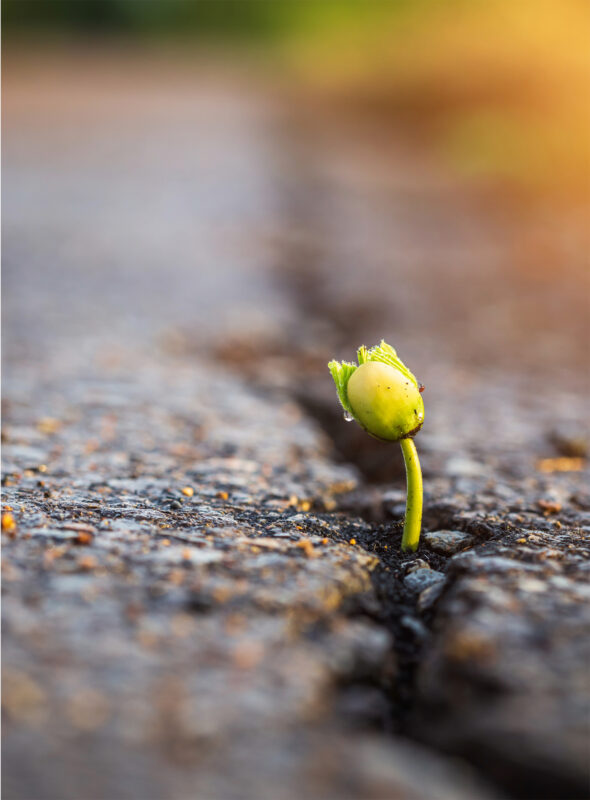
Be Alive🌱,
❤ Love, Julia
Mindful Eating 🥢
DISCLAIMER: The materials and the information contained on the Positive Pranic website are provided for general and educational purposes only and do not constitute any legal, medical, or other professional advice on any subject matter. None of the information on our videos is a substitute for a diagnosis and treatment by your health professional. Always seek the advice of your physician or other qualified health providers prior to starting any new diet or treatment and with any questions you may have regarding a medical condition. If you have or suspect that you have a medical problem, promptly contact your health care provider.



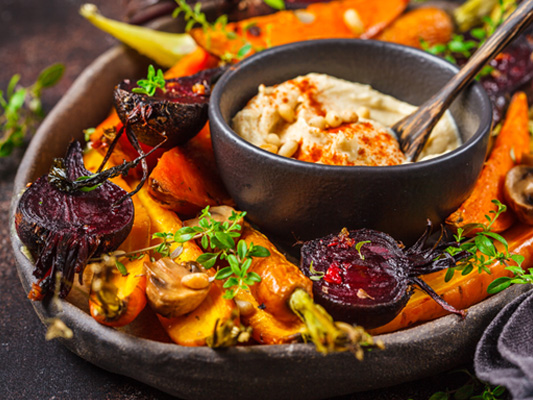







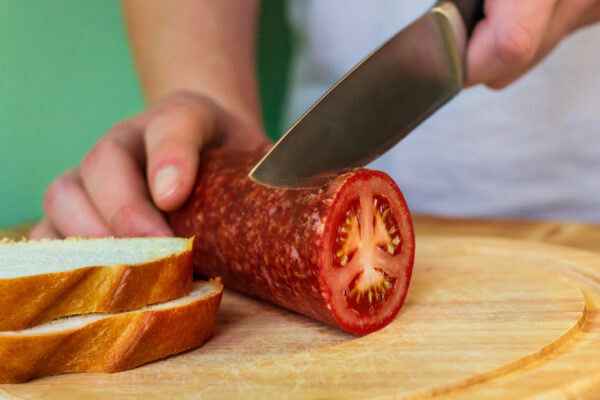

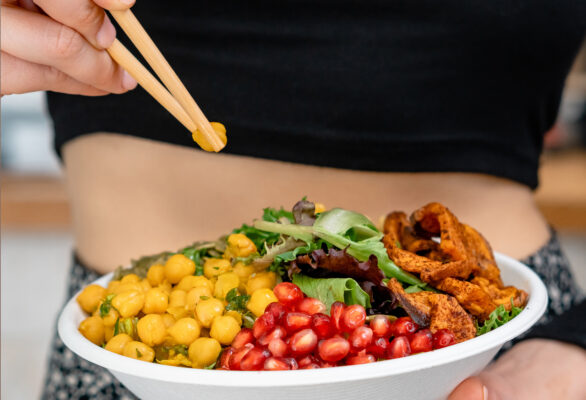
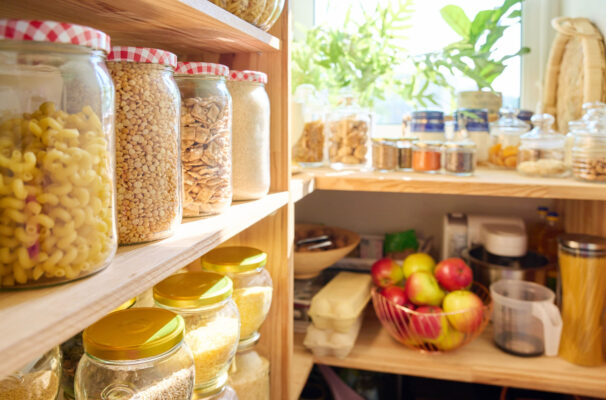
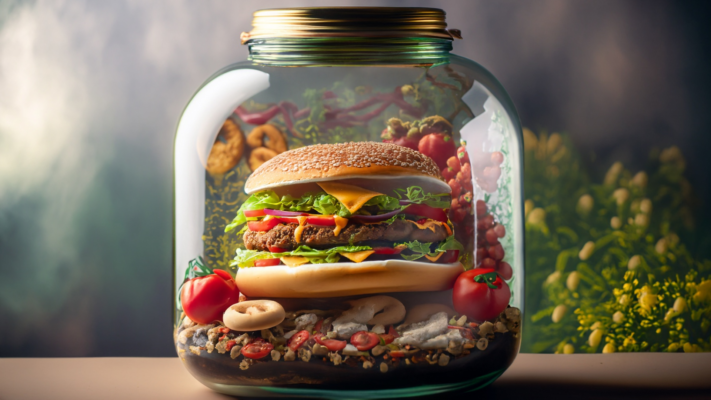
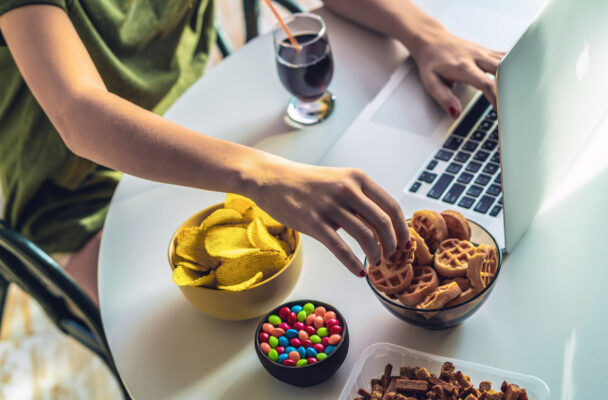

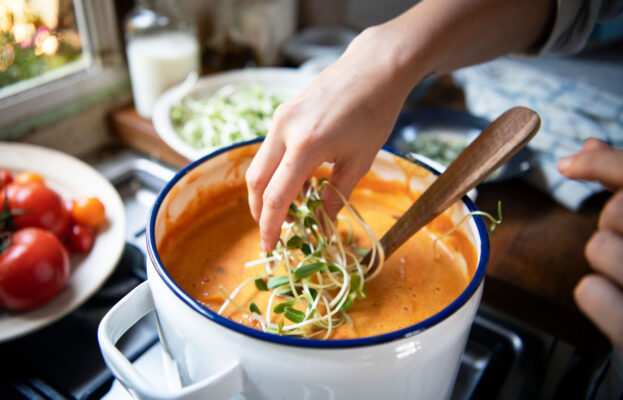
This is my observation regarding soaking of walnuts: When soaked with water and little bit of salt after only 3-4 hours the color of the solution changes to yellowish brown and when observed carefully the presence of some sort of oil floating on the water surface is clearly discernible. Don’t you think that we are losing some omega-3-fatty acids by soaking the walnuts for a prolonged period of 8 hrs or so? Do you know about any study regarding leaching of constituents from walnuts due to soaking in water? What is your personal opinion on this aspect of probable nutrient loss due to soaking? I am from India.
Hello, I hope to find you well. I have been curious and experimenting many things related to food in the past months, and one of my recent attempts was to soak and sprout white beans!
However, my attemps have been unsuccessful so far and if not sprouted, these beans are so hard that they apparently need 1 hour 15 minutes to be cooked if boiled, or 40 minutes if cooked in a pressure cooker (which I don’t have at the moment)! Such a long cooking time is probably going to turn them into negative pranic food?
Your opinion would be very useful. Thank you!
I love white beans! Here is the way I do it:
1. Soak 1 cup of beans overnight in 3-4 cups of room temperature water, with a pinch of salt and a splash of lemon (about 1 tbsp)
2. In the morning rinse thoroughly using a mesh sieve. Leave the beans in the sieve.
3. Place the sieve with the beans over a bowl, cover with a cotton towel and go about your day.
4. If you don’t have time to cook them same day, live them in a sieve, just be sure to rinse then about every 8 hours.
5. When you’re ready, place your beans in the pot with water, bring it to a boil.
6. After 20-30 min add salt and continue cooking until beans are tender.
(You can see the way I cook white beans in this video 👉🏻 The Best Red Borscht)
Long cooking time does not affect the pranic value of the food. On the other hand, the time after the food is cooked does. Ideally, food should be consumed within 3 hours after it was made, otherwise, it is considered to be neutral pranic.
😄🙏🏻🌺
Hello
Is butter nut squash, and bell peppers pranic positive? I thought cooking food destroys the Prana from them? Or does that depends on which plant and how it’s cooked?